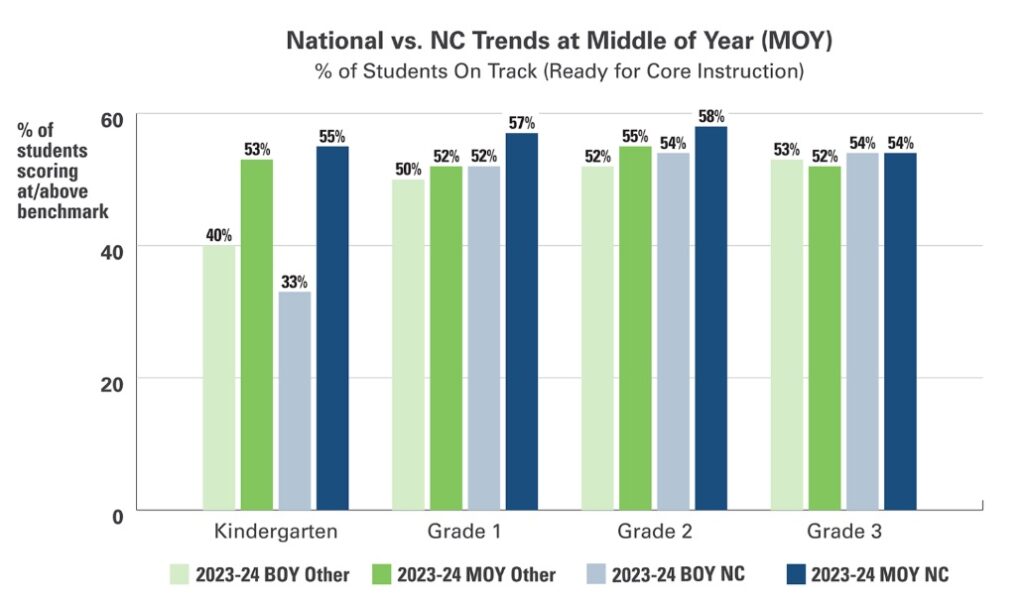
Special to Iredell Free News
RALEIGH — North Carolina’s kindergarten through third-grade students continue to outperform the nation on reading benchmarks, based on the newly released middle-of-year data.
Mirroring the beginning-of-year reading assessment results, new data presented to the N.C. State Board of Education shows that elementary school students improved their reading skills from the beginning to middle-of-year reading assessment for the 2023-2024 school year. There have been steady improvements in elementary students’ reading proficiency since the Excellent Public Schools Act, which called for all K-5 literacy educators to be trained in the science of reading, was signed into law in April 2021.
Based on middle-of-year testing data, North Carolina kindergarten through third-grade students outpaced their peers on a national level. North Carolina kindergarteners improved by 22 percent from the beginning- to middle-of-year assessment while nationally the same age group improved by 13 percent.

The assessment – DIBELS 8 (Dynamic Indicators of Basic Early Literacy Skills) – consists of a set of measures designed to evaluate component skills involved in reading.
Since implementation in 2021-2022, North Carolina students have steadily increased their benchmark results from 47 percent at or above benchmark in 2021-2022, to 53 percent in 2022-2023 and now to 56 percent in the current school year’s middle-of-year assessment. From the beginning of the 2023-2024 school year, there are over 20,000 fewer students below benchmark and more than 34,000 students at or above benchmark.
State Superintendent of Public Instruction Catherine Truitt praised the work educators have accomplished through the instruction of the science of reading, as seen in the positive trends throughout the last three years.
The Language Essentials for Teachers of Reading and Spelling (LETRS), which began rolling out the same year as the DIBELS 8 assessment, is a two-year professional development program that equips K-3 teachers with instructional tools based on decades of literacy research.
“Elementary educators have been putting the science of reading into practice throughout the past three years, and the results speak for themselves,” Truitt said. “This growth and continued progress is critical to ensuring our youngest learners are in the position to read, lead and succeed throughout their academic journey. Improving reading proficiency for students in North Carolina has been a priority for me since I stepped into office, and I’m so proud of what our students and educators have accomplished.”
By July, all 115 school districts will have completed LETRS training, totaling 44,000 K-5 educators.
While scores have been steadily rising for all subgroups, achievement gaps persist among Black, Hispanic and American Indian/Alaska Native children and their white and Asian peers.
“There is much to celebrate, between students’ continued growth and nearing LETRS’ full implementation,” Amy Rhyne, NCDPI’s director of the Office of Early Learning, said, “but there is still work to be done to support all elementary students in their reading journey.”



